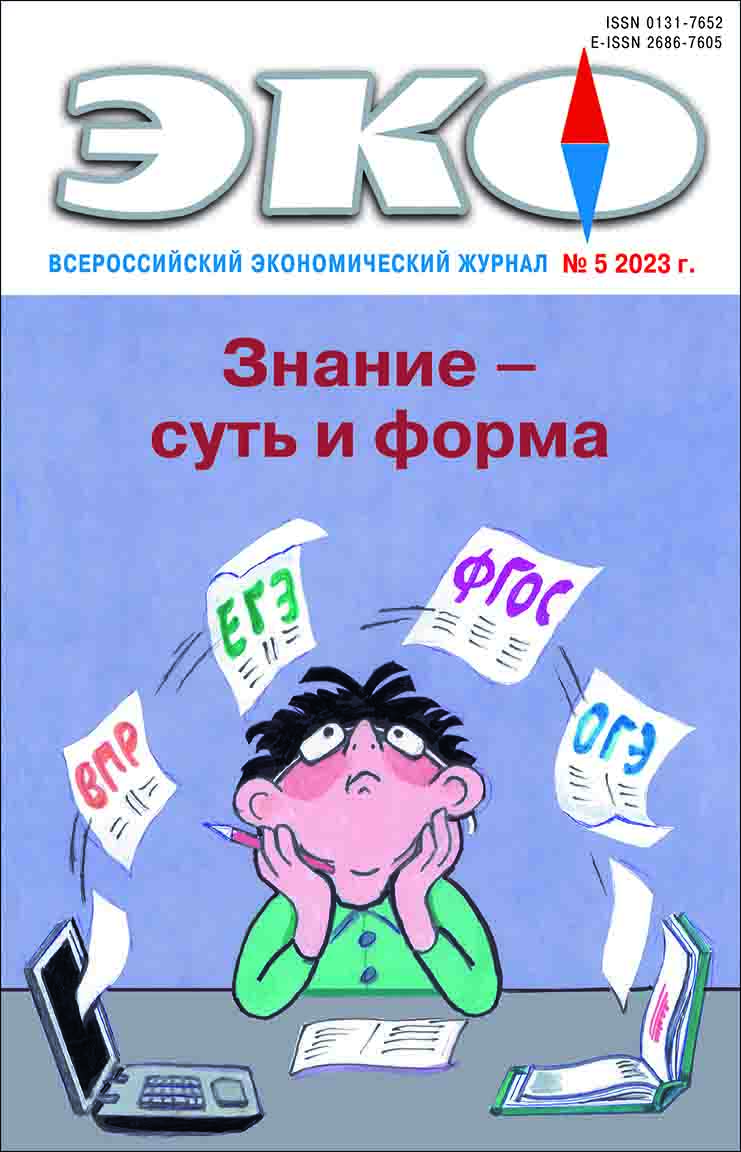REGIONAL DEVELOPMENT
Published 2023-05-03
Keywords
- human development; human capital; social risks; life cycle stages; activity motivation; Siberia
How to Cite
1.
Gvozdeva Г, Arsentyeva Н, Kharchenko И. Risks of a Diminished Human Development in Siberian Regions. ECO [Internet]. 2023 May 3 [cited 2025 Dec. 18];53(5):129-50. Available from: https://ecotrends.ru/index.php/eco/article/view/4607
Abstract
The analysis of statistical information and the results of sociological surveys of the population lead to the conclusion that the human development of Siberian regions has been decreasing over the last decade. Risks are associated with: low incomes and small families, population decline and shortage of personnel, weak motivation to work in the specialty (profession) received a diploma, reduction in the duration of a healthy life. In this situation, the all-Russian vector of migration from east to west and from north to south persists. The main sources of risks are inefficiency of regional management and the contrast between the growth of gross regional product and the decline in real incomes of the population. They can be reduced by measures to attract investment in fixed and human capital, in the development of knowledge-intensive economy, increasing the wages of skilled workers. Institutional changes in the labor market are required to strengthen the motivation of young people for engineering professions and highly skilled labor.References
- Абанкина И. В., Деркачев П. В., Зиньковский К. В., Кравченко И. А., Суркова Н. Е. Оплата труда педагогов: как изменить ситуацию к лучшему? / Под ред. А.А. Вавиловой. М.: НИУ ВШЭ, 2021. URL: https://ioe.hse.ru/pubs/share/direct/482933839.pdf (дата обращения: 22.12.21).
- Аганбегян А. Г. Три главных социально-экономических вызова, стоящих перед Россией, и 15 ответных шагов // Экономическая стратегия. 2022. № 6. С. 6–15.
- Бек У. Общество риска. На пути к другому модерну. М.: Прогресс-традиция, 2000. С. 81.
- Глущенко К. П. Где на Руси жить хорошо? // ЭКО. 2022. № 6. С. 168–177. DOI: 10.30680/ECO0131–7652–2022–6–168–177
- Елфимов Д. И. Становление и развитие дефиниции риска // "Черные дыры" в российском законодательстве. М.: ООО «К-Пресс», 2010. № 5. С. 55–57.
- Капелюшников Р. И. Сколько стоит человеческий капитал России?: препринт WP3/2012/06 [Текст] / Р. И. Капелюшников; Нац. исслед. ун-т «Высшая школа экономики». М.: Изд. дом Высшей школы экономики, 2012. 76 с.
- Кузокреа В. Выход на профессиональную арену в Италии и Англии // Антропология профессий: границы занятости в эпоху нестабильности / Под ред. П. Романова, Е. Ярской-Смирновой. М.: ООО «Вариант», ЦСПГИ, 2014. 148 с.
- Курбатова М. В. Управление по результатам в российском образовании: проблемы нормативного регулирования // ЭКО. 2023. № 3. С. 8–26. DOI: 10.30680/ECO0131–7652–2023–3–8–26
- Логинов Д. М., Семионова Е. А. Миграционные ориентации старших школьников при переходе к получению профессионального образования // ЭКО. 2023. № 3. С. 158–176. DOI: 10.30680/ECO0131–7652–2023–3–158–176
- Ойдуп Т. Человеческий капитал Республики Тыва: будущие специалисты высшей и средней квалификации // ЭКО. 2022. № 11. С. 23–39. DOI: 10.30680/ECO0131–7652–2022–11–23–39
- Рыбакова М. В. Социальные риски как показатель развития социального государства на Евразийском пространстве // Большая Евразия: Развитие, безопасность, сотрудничество. ИНИОН РАН, М., 2018. № 1. Ч. 2. С. 186–189.
- Слепенкова Ю. М. Процесс обесценивания человеческого капитала в России // ЭКО. 2022. № 11. С. 8–22. DOI: 10.30680/ECO0131–7652–2022–11–8–22
- Слуцкий Е. Г. Дисбалансы в обществе риска. Российская наука: тенденции и перспективы // Аналитический вестник Совета Федерации ФС РФ. 2002. № 21. С. 42.
- Corral P., Gatti R. “Accumulation Interrupted: COVID-19 and Human Capital among the Young.” // COVID-19 in Developing Economies / edited by S. Djankov and U. Panizza. London: Centre for Economic Policy Research. 2020.
- Ord T. The Precipice: Existential Risk and the Future of Humanity. Abingdon, UK: Bloomsbury. 2020. 481 p.
- UNDP (United Nations Development Programme). Human Development Report 2020: The Next Frontier: Human Development and the Anthropocene. New York. 2020. 412 p. ISBN: 978–9–21–126442–5. URL: https://www.undp.org/sites/g/files/zskgke326/files/migration/rs/hdr2020.pdf (accessed: 03.12.2022).
- UNDP. Доклад о человеческом развитии 2021/2022. Времена неопределенности, неустроенные жизни: наше будущее в меняющемся мире. New York. 2022. 320 с. URL: https://hdr.undp.org/system/files/documents/global-report-document/hdr2021–22rupdf.pdf (accessed: 03.02.2023).
- World bank. (2020). The Human Capital Index 2020 Update: Human Capital in the Time of COVID-19. DOI: 10.1596/978–1–4648–1552–2 URL: https://openknowledge.worldbank.org/handle/10986/34432 (accessed 03.05.2022).

